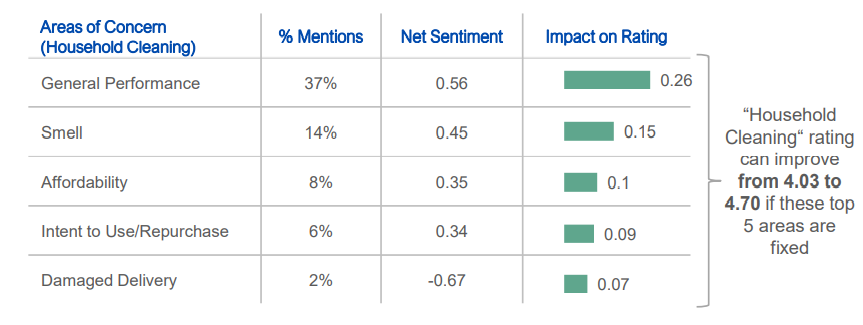Fast Moving Consumer Goods (FMCG) or Consumer Packed Goods (CPG) is one of the largest and fast-growing industries in the world, with projected market size of $15,361.8 billion by 2025 and growing at a CAGR of 5.4%. FMCG products usually have a shorter shelf life, almost consumed on a daily basis, and sold in a huge volume at a low cost with a smaller profit margin, and these factors make it one of the most competitive industries in the world. In the FMCG value chain, marketing/sales analyses usually focused on improving the commercial performance of the products and fail to be customer-centric, i.e., ignoring customer preference and feedback. In this Voice Of Customer study, we shall discuss in deep the factors influencing customer decision while buying toothpaste, one of the essential FMCG goods.
Toothpaste – Market Overview
The unprecedented COVID-19 pandemic has doubled the emphasis on oral hygiene. With dental clinics around the world closed for routine consultations, the significance of regular oral self-care has increased among people and has driven toothpaste consumption globally. The toothpaste market is estimated to reach USD 34.6 Billion by 2024 at a CAGR of 5.8% between 2020 and 2026. Though the global toothpaste market continues to be highly fragmented with local players, the leading players such as Colgate-Palmolive, Procter & Gamble, Unilever, and GlaxoSmithKline PLC tend to dominate the markets with a majority share.
Our Methodology
Unlike traditional market research methods that predominantly rely on manual surveys that are highly prone to errors and bias, our unique methodology leverages online customer-generated content. We employ AI-powered text mining algorithms that extract related and unstructured data from the internet from several different sources such as social media, blogs, news feeds, etc. Then the raw data is fed into our Natural Language Processing (NLP) and Sentiment Analysis Engines, which uses AI models that are custom trained for the specific use cases with industry-specific taxonomies and hierarchy evolved from raw data. This sentiment analysis process helps to derive customer and market insights accurately and link them to business areas and goals.

Analysis Insights
The following are the insights automatically derived by the Voice of Consumer Insights and Signals (VOCIS) module by aggregating customer conversations from diverse sources such as Social Media, E-Commerce reviews, Discussion Boards, and Blog Posts.
Brand Insights
This analysis focuses on providing insights into the brand perception of the customers. With the use of sentiment analysis, we shall compare the perception of a brand with that of the leading competitors and use the same to create a data-driven brand strategy.

Our analysis shows that Crest is the brand with a maximum Shar of Voice (SoV) of 19% and a positive sentiment rating of 4.26/5, followed by Tom’s and Colgate.
Product Level Insights
The buyer’s decision to purchase a product tends to be strongly influenced by a few key factors, features, and attributes. This analysis would help the brands in understanding these factors and optimize the product to appeal better to the target segment.

From more than 7.5K reviews mined from the E-Commerce site, the above were the top 5 features that need a fix and got the potential to improve the rating, thus influence the customers positively in buying the product. Taste emerged as the topmost influential factor with a significant impact on the ratings, followed by Packing Design/Quality and Affordability.
Competitor Insights
Competitor Benchmarking is quintessential as it helps in developing a deep understanding of the market ecosystem and builds a picture of gaps to be fixed and opportunities to leverage. It also helps in streamlining the product and marketing efforts by emulating your competitor’s success elements such as price and key product features.

The sentiment analysis for Crest, the top brand based on the customer rating against its competitors, highlighted the product features that are favorable and the features that have scope for improvement. The features such as the presence of natural ingredients and smell contributed to the positive sentiment scores. Whereas, features such as the addition of additives & preservatives and lack of pain relief components appear to contribute to the negative sentiment scores.
SetuServ’s Voice of Consumer Insights and Signals (VOCIS) platform employs custom models that can be built rapidly specifically for use cases with proven workflows, data pipelines & AI modules. These custom models help in rendering highly accurate and relevant insights linked to the organization’s KPI and goals








